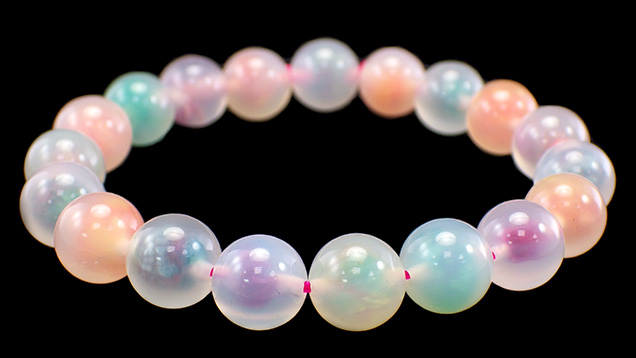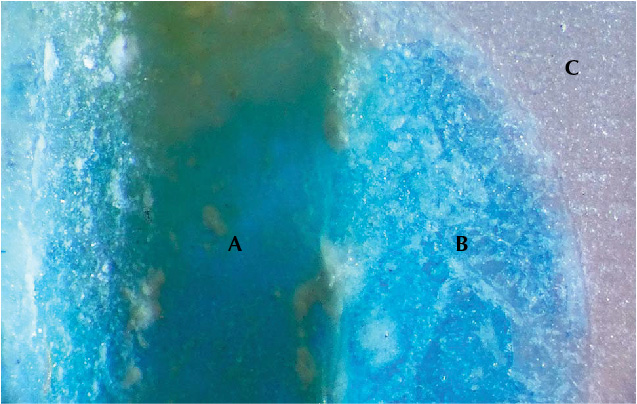Epoxy-Filled Chalcedony as an Imitation for “Candy Agate”

A special kind of agate known as “candy agate” is produced in the Alxa Plateau of Inner Mongolia. This type of agate usually comes in irregular shapes and granular gravels, with a diameter ranging from several millimeters to several centimeters (figure 1). In addition to a variety of bodycolors, these agates occasionally present color zoning between the inner core and the outer layer. These candy agates have been very popular during the past few years, especially in the Taiwan market.

Recently, several strings of beads were submitted to the Taiwan Union Lab of Gem Research (TULAB) as candy agate (figure 2). The outer layer of the beads was colorless and semitransparent, and the inner core presented various colors of green, purple, orange, yellow, or greenish blue. These agate beads did not have any fissures extending from the surface to the inner core but only a drill hole penetrating each bead so they could be threaded together to make a bracelet. Gemological testing identified the beads as chalcedony, but the unusually bright color of their inner cores looked unnatural and thus aroused suspicion.



To verify whether the center color of these beads was natural, the beads were further analyzed by Raman spectroscopy with 785 nm laser excitation at the surface and about 1–2 mm deep into the colored inner core. Comparisons of the resulting spectra with those reported in previously published studies identified the materials as chalcedony and epoxy resin (figure 3), which means that these “candy agates” were likely chalcedony beads hollowed out and filled with colored epoxy resin. Under microscopic observation (figure 4), some of the beads even had bubble inclusions in their inner cores, further supporting the possibility of epoxy filling. To understand how these beads were made, we asked the owner to provide samples cut in half for further testing. Microscopic observation of the cross-sections revealed that the beads were somehow hollowed out through the drill hole and then filled with colored epoxy resin (figure 5). Finally, a second drilling was performed along the original drill hole after the epoxy resin had hardened.
The colored inner core, which makes the agate special and valuable, is common in natural candy agate from the Alxa Plateau. The imitation candy agate in this study could be defined as a new type of epoxy-filled chalcedony which showed similar colored cores to natural candy agate. The most effective non-destructive methods for identifying this product are Raman spectroscopy and microscopic observation, but the results may be affected by the location of the inner core and the transparency of the chalcedony.



